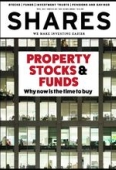Archived article
Please note that tax, investment, pension and ISA rules can change and the information and any views contained in this article may now be inaccurate.
It’s time to prepare portfolios for a second-half market correction

At the end of 2022, investment experts predicted an equity market rally in the second half of the year. They have been somewhat right – markets have indeed gone up, but the rally happened early in the year. With decent gains from stocks and shares since January, the attention now shifts to the second-half period and how that might not be so good for investors.
It’s quite remarkable that markets have held up this year given we’ve seen a banking sector crisis and, at the time of writing, the US government was still to finalise a deal on the debt ceiling. While there were a few bad days for equities leading up to the 1 June deadline, markets generally seemed confident an agreement would be reached to raise the ceiling, just as has happened in the past.
A deal might have already been signed off by Congress by the time you read this article, yet that doesn’t make everything right again. There are still reasons to be on your guard as we move into summer.
Economic growth has so far this year held up better than expected in both the US and the UK, which has helped equities. Labour markets have been strong and inflation is coming down in many areas. The artificial intelligence theme has also given investors a new reason to search for relevant stocks, and there have been plenty of big winners in the space this year.
However, we face problems elsewhere. Banks are less willing to lend after the recent Silicon Valley Bank collapse, and some parts of inflation are proving to be sticky, so we cannot say for certain that central banks have finished raising interest rates this year. Indeed, US PCE core inflation in April was higher than expected, increasing the chances of the Federal Reserve hiking rates once again in June.
It seems reasonable to predict a slowdown in the economy if borrowing costs keep going up, a scenario that has historically been tricky for stocks and shares. Markets do not appear to be pricing in the risk of a more difficult second half. So, if companies come along and say they haven’t met earnings forecasts because life is tough,
then share prices could experience a sharp downward correction.
US stocks generally look expensive and that’s a problem if we get bad news in the remainder of the year. The richer the rating, the bigger the potential fall if news flow disappoints. Remember that if the US market falls over, there is a good chance other markets globally will do the same.
In late May, the median forward price to earnings ratio for the S&P 500 index of US shares was 18.3-times, which is in the top 15% of historical levels. Analysts expect mid-to-high single-digit earnings growth for the index in the second half of 2023. Morgan Stanley believes consensus estimates could be as much as 20% too high.
Given the risks to markets, it is important to be diversified with your investments – sectors, geographies and asset classes. You might want to increase your exposure to cash as there are some decent rates of interest available and that would also give you a war chest to ‘buy on the dips’ if the market does correct.
Be long-term in your thinking and view market selloffs as opportunities to take positions in companies for less, not a reason to put your head in your hands in despair.
Important information:
These articles are provided by Shares magazine which is published by AJ Bell Media, a part of AJ Bell. Shares is not written by AJ Bell.
Shares is provided for your general information and use and is not a personal recommendation to invest. It is not intended to be relied upon by you in making or not making any investment decisions. The investments referred to in these articles will not be suitable for all investors. If in doubt please seek appropriate independent financial advice.
Investors acting on the information in these articles do so at their own risk and AJ Bell Media and its staff do not accept liability for losses suffered by investors as a result of their investment decisions.
Issue contents
Feature
Funds
Great Ideas
News
- Nvidia is world’s top AI pick after detailing huge spike in technology demand
- Gilt market signals the alarm over a surprise rise in UK core inflation
- Why insurers could face higher catastrophe claims this year and into the future
- Investors disappointment with Future sees shares down over 40% year-to-date
- Investors chase Mitchells & Butlers shares higher as consumers return to pubs

 magazine
magazine








